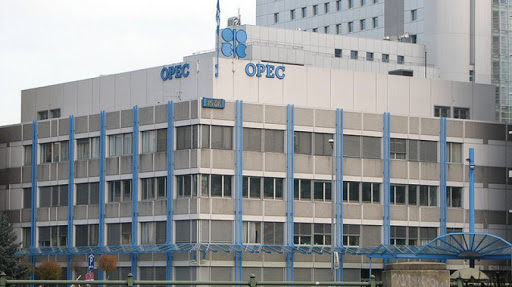High-level OPEC officials unpacked the Organization’s short- to long-term crude oil market perspectives in a special session at the Invest in African Energy forum in Paris on Tuesday.
Based on OPEC’s latest Monthly Oil Market Report – released on May 14 – and World Oil Outlook, the session identified key growth drivers of oil supply and demand through 2045, underscoring the role of African and emerging markets in driving global economic activity.
“We believe in the future of Africa and the South-South – we see almost all of global oil demand coming out of emerging markets,” said Dr. Ayed Al-Qahtani, Director of Research Division and OPEC. “We see the global economy at least doubling in size and emerging nations commanding the lion’s share of energy demand going forward. Africa sits on north of 120 billion barrels of crude, and this can be extended to all commodities – precious metals, gas, hydropower, all of the above. The issue of investment is significant and hinders the exploitation of these resources that could facilitate huge potential for economic growth.”
“In the medium-term, non-OPEC supply will drive the market – we’re looking at an addition of 7 million barrels of oil per day – from Brazil, Guyana and Canada. However, we expect this supply to peak towards the 2030s. As soon as it peaks, there will be increased demand in OPEC supply and this demand will rise to about 40% share of the oil market by 2045,” said Irene Nkem Etiobhio, Chief Petroleum Industry Analyst.
With positive economic growth anticipated into 2025, the panel shared insights into the role of inflation and various economic, social and geopolitical factors, particularly in the US, on global oil supply and demand.
“We believe that inflation will remain high during 2024 and 2025, but will gradually decline and there will be less of a need for stringent monetary policies. Global economic growth will stand at 2.8% for 2024 and 2.9% for 2025,” said Behrooz Baikalizadeh, Head, Petroleum Studies Department.
“We estimate the US economy to grow by 2.9% in 2024 and by around 1.9% in 2025. Against this backdrop of a strong US economy, inflationary pressures will likely remain and will potentially delay decisions to lower interest rates. The strength of the US economy, coupled with inflationary pressures, will likely… result in high commodity prices,” said Angel Edjang Memba, Senior Financial Analyst.
The panel also highlighted recent developments in refining and trade on the continent and their impact on the price and availability of refined petroleum products. While Africa’s refining capacity has been limited to date, new developments – including Nigeria’s 650,000-barrel per day Dangote refinery – are reshaping the sector.
“There have been notable changes in global refining capacity with new large-scale refineries coming online … These have contributed to a rise in new product supplies. In the near-term, this will exhibit pressure on refining margins, but could also be a good sign for end consumers, where prices are going down with more supply,” said Tona Ndamba, Chief Refinery & Products Analyst.
APO Group

